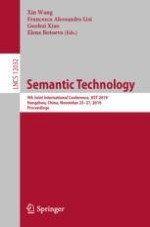2020 | OriginalPaper | Buchkapitel
CICO: Chemically Induced Carcinogenesis Ontology
verfasst von : Sungmin Yang, Hyunwhan Joe, Sungkwon Yang, Hong-Gee Kim
Erschienen in: Semantic Technology
Aktivieren Sie unsere intelligente Suche, um passende Fachinhalte oder Patente zu finden.
Wählen Sie Textabschnitte aus um mit Künstlicher Intelligenz passenden Patente zu finden. powered by
Markieren Sie Textabschnitte, um KI-gestützt weitere passende Inhalte zu finden. powered by
